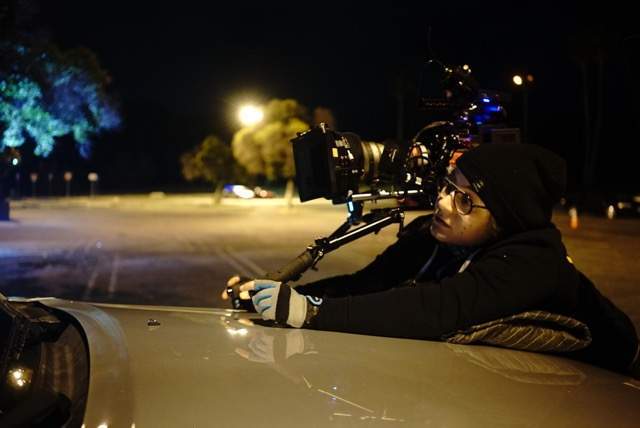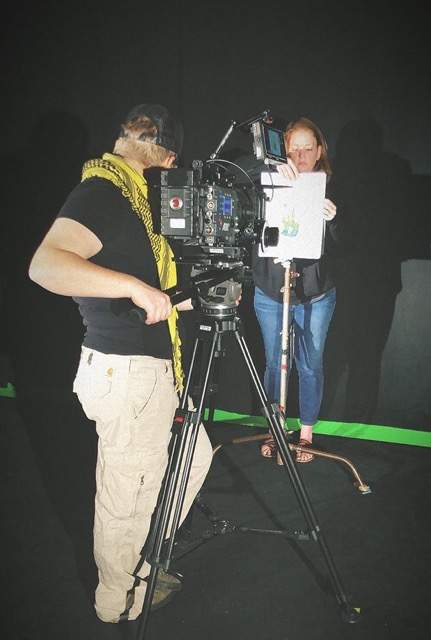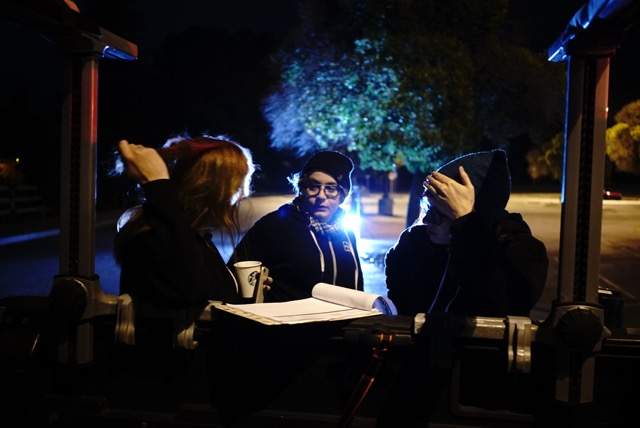
The most important thing a film can do is to create empathy, to place the audience in the emotional and experiential perspective of the characters in a story. When that story is told by talented and skilled artists who possess a special connection to the subject matter and each other, the results can be transformative for audience and artist; such a description is ideally suited to describe the film Onshore and those behind its manifestation. Sara Lattis wrote and directed Onshore and brought cinematographer Leo Sfeir aboard. This duo had previously worked together on multiple projects including the IndieFEST and Indie Short Fest award winning film Beats, currently in its festival run. Onshore narrates the hours following the explosion on the Deepwater Horizon oil rig. Because of the circumstances around this tragic occurrence, filming would demand quite a deviation from Sfeir’s normal surroundings as a DP. A further in-depth look at this film will illustrate the immense trust Lattis had for Leo’s talent; trust which was proven well placed.

The interest in Onshore has peaked higher than most indie films. Though still in post-production, it already has a chapter dedicated to it in the awarded book Dirty Work Essential Jobs and the Hidden Toll of Inequality in America by Eyal Press (named one of the 10 best books of 2021 by the Chicago Tribune and Publishers Weekly and one of the 100 Notable Books of 2021 by The New York Times). Set for release in early Summer of 2022, Onshore illustrates how far reaching a tragedy can be. Inspired by the true story of the Deepwater Horizon explosion in 2010, the film is based on the Director’s personal experience combined with the stories of other spouses and family members of the rig’s crew. The filmmakers wanted to transform this international news story into an immersive tale of personal loss.

For this film, two wives of workers on the oil rig are the proxy for the audience. Through the first-hand experiences of Jess and Rachel, we witness how vast the difference can be in processing such an occurrence. Both women receive the news that the oil rig has exploded and must wait to discover what they’ve lost and what their future will look like. It cannot be overstated that one of the genius elements of this film is to illustrate that the same facts can be interpreted and handled differently by two different individuals, a fitting lesson for today’s world. Sfeir’s approach as the film’s DP was paramount in achieving this goal. Rachel’s warmer tones are vastly different from the cool and contrasting tones in which we see Jess. This subtle tactic immediately communicates disparate states of processing for these characters. DP Leo Sfeir informs, “For this film we wanted to create two distinct looks and tones, one per character. As their reactions are almost on the complete opposite ends of the spectrum, one woman is in denial and the other in complete despair. We played with different color palettes for the two following their different mental states but we connected their world together with the use of wide lenses, very close to create some distortion in the images. The camera is hand held as soon as the characters learn what has happened to follow the action and the restlessness that both characters are feeling.” Leo’s vacillation between the use of handheld cameras and those mounted on sticks reinforces the contrast between an “out of control” feeling and the attempt to “hold it together.” Sfeir takes the opportunity in some of the film’s most cathartic scenes to present the action with lighting and lens choices for a decidedly unintuitive approach that yields a heightened dramatic result. The subtext here is that life doesn’t make sense sometimes and intelligent filmmaking will remind you that there is no trope in real life. Sfeir’s use of this is deceptive in the most pleasing and gratifying way. He informs, “One of the most challenging parts of my work for this project was how deeply connected to the story my director was. This story is very largely inspired by her life and the life of other women who had to go through this traumatic situation. Being able to work on a project that has this much importance, both to the director but also every victim from that explosion, was very rewarding. Having the opportunity to give a voice to someone who’s always pushed away is something that is really dear to my heart as someone who has very little representation.”
Sara Lattis and Leo Sfeir will collaborate again on an upcoming science fiction psychological thriller titled Aria. The film follows a small-town girl who is the target of psychotropic harassment. To save herself, the heroine must conquer an invisible matrix and become one of them.
https://www.instagram.com/onshorefilm/
Writer: Coleman Haan